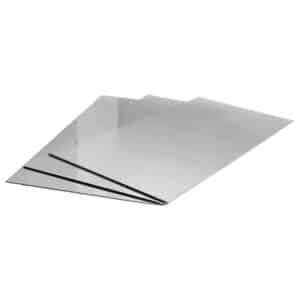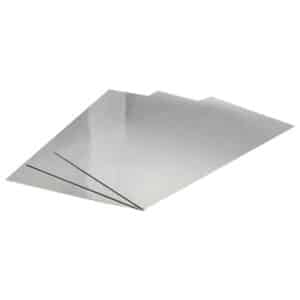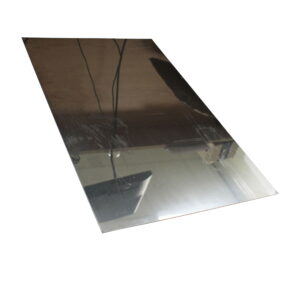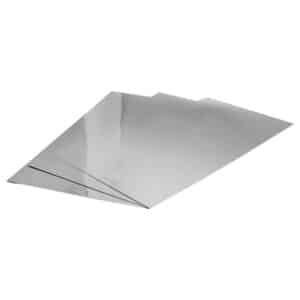- Massive Range
- FREE UK Delivery
- Rapid Dispatch
- Massive Range
- FREE UK Delivery
- Rapid Dispatch
- Massive Range
- FREE UK Delivery
- Rapid Dispatch
Home » Mirrored vs Brushed SS430: Which Stainless Steel Finish Suits Your Needs?
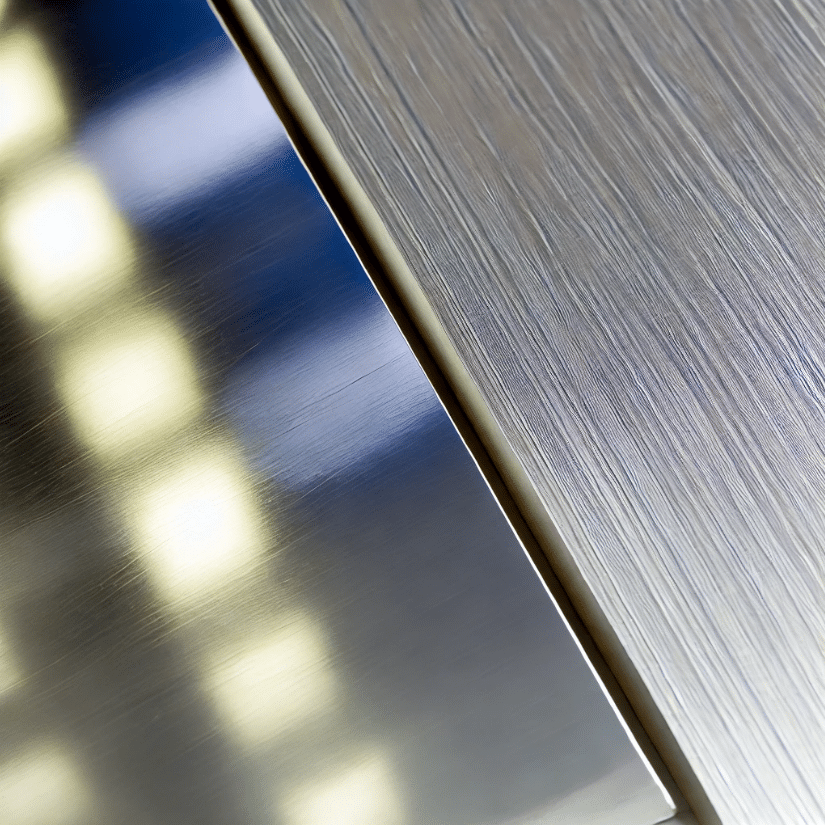
When choosing materials for a construction, renovation, or design project, stainless steel often stands out as a preferred option due to its durability, corrosion resistance, and aesthetic appeal. Among the different grades and finishes of stainless steel available, both mirrored vs brushed SS430 finishes has become increasingly popular. However, understanding the differences between these two finishes—mirrored and brushed—can help you decide which is best suited to your specific needs.
In this comprehensive guide, we will dive deep into the characteristics, advantages, disadvantages, and common uses of each finish, ultimately helping you make an informed decision in the debate of mirrored vs brushed SS430.
Before delving into the finishes, let’s briefly explore what SS430 stainless steel is. SS430, or stainless steel grade 430, is a ferritic stainless steel that contains a lower chromium content than other stainless steel grades, such as 304 or 316. It is magnetic and offers good resistance to corrosion in mildly corrosive environments, making it a cost-effective and practical choice for many applications.
SS430 stainless steel is often used in domestic appliances, automotive trims, and certain types of architectural components due to its reasonable price, decent corrosion resistance, and good formability. However, the finish applied to this type of stainless steel significantly influences its appearance, usability, and performance in specific contexts.
A mirrored finish on stainless steel, also known as a #8 finish, is a highly polished surface that provides a reflective, mirror-like appearance. Achieving this finish involves buffing the stainless steel to a high shine with the use of fine abrasives and polishing compounds. The end result is a smooth, glossy, and reflective surface that resembles a mirror.
Aesthetic Appeal: The most significant advantage of a mirrored finish is its visual appeal. The shiny, reflective surface adds a sense of luxury and sophistication, making it ideal for decorative applications.
Light Reflection: Due to its high reflectivity, mirrored SS430 can enhance lighting conditions in spaces by reflecting natural and artificial light. This quality makes it particularly useful in small or dark areas where light needs to be amplified.
Ease of Cleaning: The smooth surface of a mirrored finish makes it relatively easy to clean, as dirt, grime, and fingerprints are less likely to adhere compared to a textured surface. It’s also resistant to staining, provided that proper cleaning methods are employed.
Corrosion Resistance: The polishing process used to create a mirrored finish helps seal the surface, enhancing its resistance to certain types of corrosion and oxidation.
Prone to Scratches: One of the main drawbacks of a mirrored finish is its susceptibility to scratches. The smooth, reflective surface can easily show scratches, dents, and other imperfections, which can affect its appearance over time.
High Maintenance: Although easy to clean, the mirrored finish requires frequent upkeep to maintain its shine and luster. Smudges, fingerprints, and dust can be more noticeable, necessitating regular cleaning.
Cost: The process of creating a mirrored finish is labor-intensive and requires specialized equipment, making it more expensive than other finishes such as brushed or matte.
Limited Applications: Due to its glossy appearance and tendency to scratch, mirrored SS430 is less suitable for high-traffic areas or environments where the surface may be exposed to frequent contact or abrasion.
A brushed finish, also known as a #4 finish, involves polishing the stainless steel surface with a series of abrasive belts or brushes to create a uniform, linear grain pattern. The result is a matte, satin-like texture that is less reflective than a mirrored finish but still offers an appealing and modern appearance.
Durability: A brushed finish is generally more durable than a mirrored finish. The textured surface is less likely to show scratches, dents, or other minor imperfections, making it ideal for high-traffic areas or environments where the surface may be subjected to regular wear and tear.
Lower Maintenance: The matte texture of brushed SS430 hides fingerprints, smudges, and minor blemishes better than a mirrored finish, reducing the frequency and intensity of cleaning required to maintain its appearance.
Versatility: Brushed SS430 can be used in a wider range of applications due to its understated, modern look. It is commonly used in kitchen appliances, cabinetry, architectural components, handrails, and more.
Cost-Effective: The process of creating a brushed finish is less labor-intensive than a mirrored finish, which makes it a more cost-effective option for large-scale projects or applications where a reflective surface is not necessary.
Less Reflective: While some may prefer the subtle, matte appearance of brushed SS430, it lacks the high reflectivity and shine of a mirrored finish. This makes it less suitable for applications where a bright, reflective surface is desired.
Surface Texture: The texture of brushed stainless steel can make it more challenging to clean certain types of grime or debris that may get caught in the grooves or grain pattern. Additionally, the surface may be more susceptible to discoloration from chemicals or other contaminants.
Corrosion Resistance: While brushed SS430 offers decent resistance to corrosion, the textured surface can sometimes retain moisture or corrosive substances, which may lead to pitting or discoloration over time if not properly maintained.
Limited Aesthetic Appeal: For projects where a sleek, glossy look is desired, brushed SS430 may not provide the desired effect due to its muted and understated appearance.
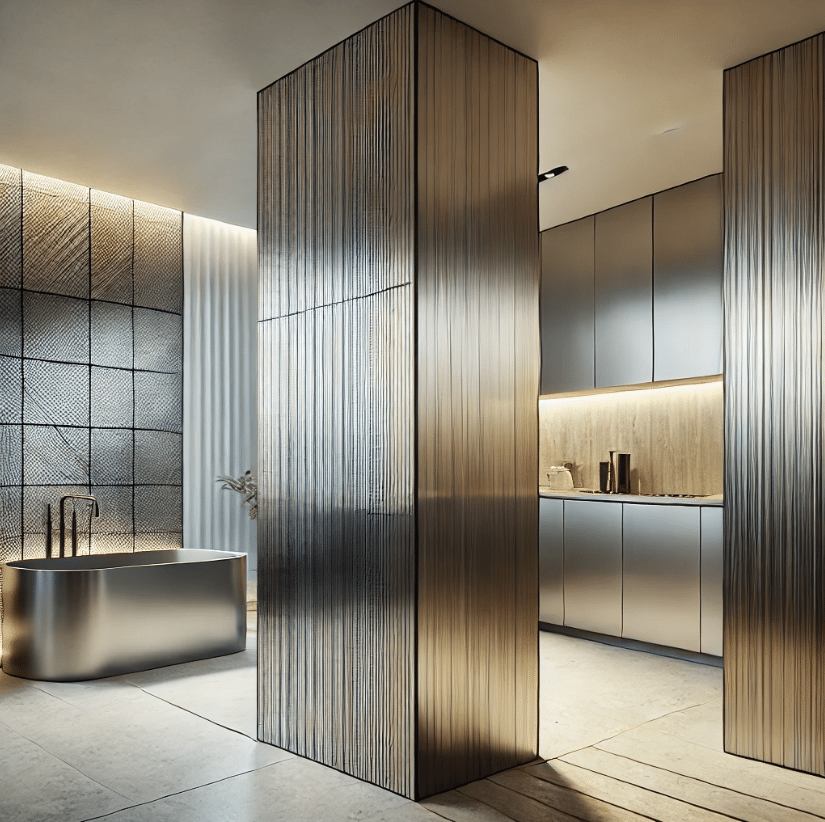
To make an informed choice between mirrored vs brushed SS430, it’s important to understand the key differences that set these finishes apart.
Appearance:
Scratch Resistance:
Maintenance:
Cost:
Applications:
Decorative Elements: Mirrored SS430 is frequently used for decorative purposes, such as wall panels, elevator interiors, and ceiling tiles, where a luxurious and high-end appearance is desired.
Signage: Due to its reflective qualities, mirrored SS430 is often used for signage in commercial and retail environments, where it can catch the eye and enhance visibility.
Furniture Accents: Mirrored stainless steel is used to create sleek, modern furniture accents, such as tabletops, chairs, and decorative trims, adding a touch of elegance to any space.
Interior Design: In interior design, mirrored SS430 is popular for creating focal points, reflective surfaces, and light-enhancing features in spaces like bathrooms, kitchens, and commercial lobbies.
Kitchen Appliances: Brushed SS430 is commonly used in the manufacture of kitchen appliances, such as refrigerators, ovens, and dishwashers, where its durability and easy maintenance are highly valued.
Architectural Components: This finish is often used in architectural components, including handrails, balustrades, and cladding, where a modern, understated appearance is desired.
Cabinetry and Furniture: Brushed SS430 is ideal for cabinet handles, door hardware, and furniture pieces that require a durable, scratch-resistant finish.
Automotive Trim: The automotive industry frequently uses brushed SS430 for exterior and interior trim components, such as grills, moldings, and door handles, due to its durability and aesthetic appeal.
When deciding between mirrored vs brushed SS430, consider the following factors:
Aesthetic Preferences: If you prefer a high-shine, reflective surface that adds a sense of luxury to your space, a mirrored finish is the better choice. However, if you prefer a more subdued, modern look, brushed SS430 may be more appropriate.
Application and Environment: Consider where and how the stainless steel will be used. For decorative or low-traffic areas where appearance is paramount, mirrored SS430 may be ideal. For high-traffic, functional areas where durability and low maintenance are more important, brushed SS430 is likely the better option.
Maintenance Requirements: Think about the level of maintenance you are willing to commit to. Mirrored SS430 requires more frequent cleaning to maintain its appearance, while brushed SS430 is more forgiving of smudges and minor imperfections.
Budget: Mirrored SS430 is generally more expensive than brushed SS430 due to the labor and materials required for its finish. If cost is a significant factor, brushed SS430 may be a more economical choice.
In the debate of mirrored vs brushed SS430, there is no one-size-fits-all answer. The best choice depends on your specific needs, preferences, and the intended application of the stainless steel. Both finishes offer unique advantages and disadvantages, so it is essential to weigh the factors that matter most to you—be it aesthetics, durability, maintenance, or cost.
By understanding the differences between these two popular finishes, you can make a more informed decision that aligns with your project’s goals and requirements, ensuring that you choose the stainless steel finish that best suits your needs. Whether you opt for the high-shine elegance of mirrored SS430 or the durable, modern appeal of brushed SS430, both finishes offer the reliability and versatility that make stainless steel a favored material in a wide range of applications.
As always, thank you for checking out our blog. We hope that this helps you with your project.
Please also check out the other articles in our helpful guide series. We have written about maintaining stainless steel and stainless steel sheet metal recently to name but two of our articles.
We are also proud to sell this product on our highly popular eBay store, check us out there too.
If you have any further questions, feel free to contact us.
